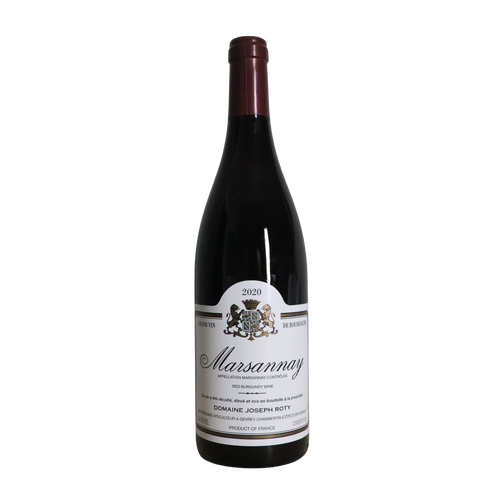
2022 Domaine Joseph Roty Marsannay Rouge, Burgundy, France
A pure and finely wrought expression of Pinot Noir, the 2022 Marsannay Rouge from Domaine Joseph Roty marries ripe red fruit with the savory, earthy complexity that defines northern Côte de Nuits wines. Aromas of wild raspberry, black cherry, and red plum are layered with hints of violet, forest floor, and subtle spice. The palate is supple yet precise, framed by silky tannins and fresh acidity, with a mineral thread carrying through to a long, harmonious finish.
There are 2 units left in stock.
ABOUT THIS WINE
Sourced from well-situated parcels in Marsannay, the northern gateway to the Côte de Nuits, this wine reflects the appellation’s cooler climate and limestone-clay soils. The 2022 vintage brought a warm, generous growing season, balanced by timely rain and cool evenings, resulting in fruit of excellent concentration and aromatic lift. Grapes are harvested by hand, sorted meticulously, and vinified with traditional Burgundian methods: partial whole-cluster fermentation, gentle extraction, and aging in a proportion of new French oak barrels to add subtle spice and texture.
The result is a Pinot Noir that is both approachable in youth and capable of graceful evolution over 5–8 years. Its balance and complexity make it an ideal partner for dishes such as roast duck breast, mushroom risotto, chargrilled salmon, or soft-ripened cheeses like Époisses or Brillat-Savarin.
ABOUT THIS PRODUCER
Domaine Joseph Roty is a renowned family estate located in the heart of Gevrey-Chambertin, Burgundy. The estate has been producing wines since 1960 and is currently managed by brothers Pierre-Jean and Philippe Roty, representing the 11th generation of winemakers in the family. The Roty family has been passionate about winegrowing since the early 18th century.
The vineyards are situated in the Côte de Nuits region, known for its exceptional Pinot Noir. The estate practices traditional viticulture, with a focus on old vines, some dating back to 1881. The use of pesticides and herbicides is avoided, and the vines are grown on clay-limestone soils.
Details:
| Grape(s) | Pinot Noir |
| Farming | Organic |
